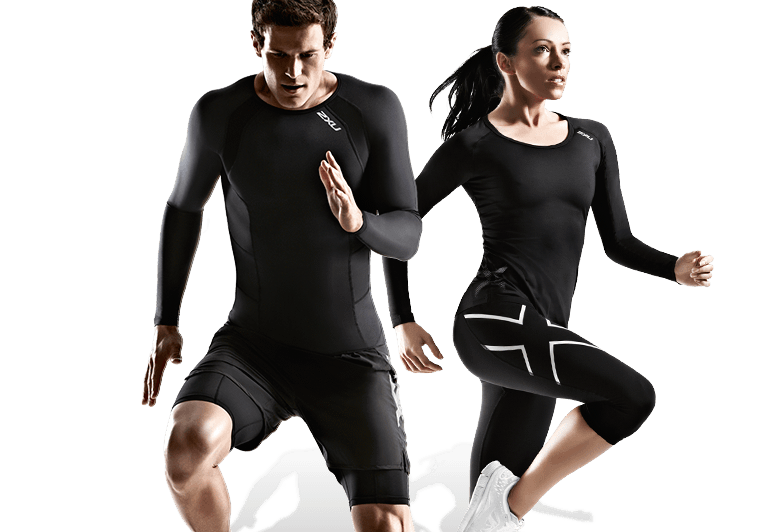
Neuromuscular Coordination
July 13, 2017
The beautiful world of cycling biomechanics
August 2, 2017Many people nowadays are exposed to hundreds of different products that claim to improve endurance, strength and recovery whether it be through supplements, nutritional tips or even the use of certain equipment. Compression garments have become extremely popular in recent years as athletes all around the world are found wearing them when performing they’re respectable sports. As such, how do compression garments really work and do they provide any athletic advantage?
To understand the effects that compression garments place on the body, one must understand the notion of hydrostatic pressure. Hydrostatic pressure can be defined as the pressure exerted by a fluid under the effects of gravity. The higher the column of fluid, the higher the hydrostatic pressure. With the human body being made up of more than 70% water, the effects of gravity cause the hydrostatic pressure to be extremely high when measured at the feet.
As blood circulates through the body, the effects of hydrostatic pressure have a direct influence on how this circulation takes place. For the oxygenated blood circulating in the arteries away from the heart, the hydrostatic pressure is relatively low as most organs are situated below the heart allowing gravity to pull the blood downwards. On the other hand, the veins, which carry deoxygenated blood back to the heart, must overcome a very high hydrostatic pressure especially when bringing blood back up from the feet. To have this blood come back to the heart, the blood pressure generated must overcome this hydrostatic pressure. To help the heart overcome this pressure, the human body has numerous anatomical aids to help it do so. Firstly, muscular contractions are a large contributor in increasing blood return to the heart by continuously squeezing and syphoning blood through vessels up against gravity. Secondly, the veins are lined with one-way valves that allow for blood to travel back up to the heart but do not allow for blood to pool back down. It’s with the help of these valves that our blood pressure does not end up sky rocketing in trying to return blood to the heart.
In understanding the notion of hydrostatic pressure, compression garments work in the same way as the muscles and valves do. Essentially, as the name states, compression is placed on the body when wearing this kind of clothing. Many different types of clothing exist from leggings, shirts, socks and sleeves (for both arms and legs) that all have the same goal in increasing the venous return (return of blood through the veins) to the heart. Typically, compression garments exert more compression on the body at the distal end of the limb and less as they move closer to the trunk. This allows for blood, lymphatic fluids and metabolic by products to be pushed back to the organs responsible for handling them and excreting what is not necessary. Many studies have proven the effectiveness of compression garments in terms of increasing post workout recovery times but little evidence has been shown to increase athletic performance or giving any kind of competitive edge. Furthermore, numerous medical applications of compression garments have been taking place in recent years. Compression socks have become incredibly popular in helping people suffering from diabetes to improve blood flow and preventing blood clots forming in distal parts of the leg.
To conclude, compression garments are becoming more popular for athletes willing to recover faster by combatting the effects of hydrostatic pressures placed on their bodies. Many athletic and medical companies continue searching for possible applications of compression garments to aid individuals around the world to improve circulation and functional capacity to live a better lives.
Oliver Lisenbarth
Kinesiologist




